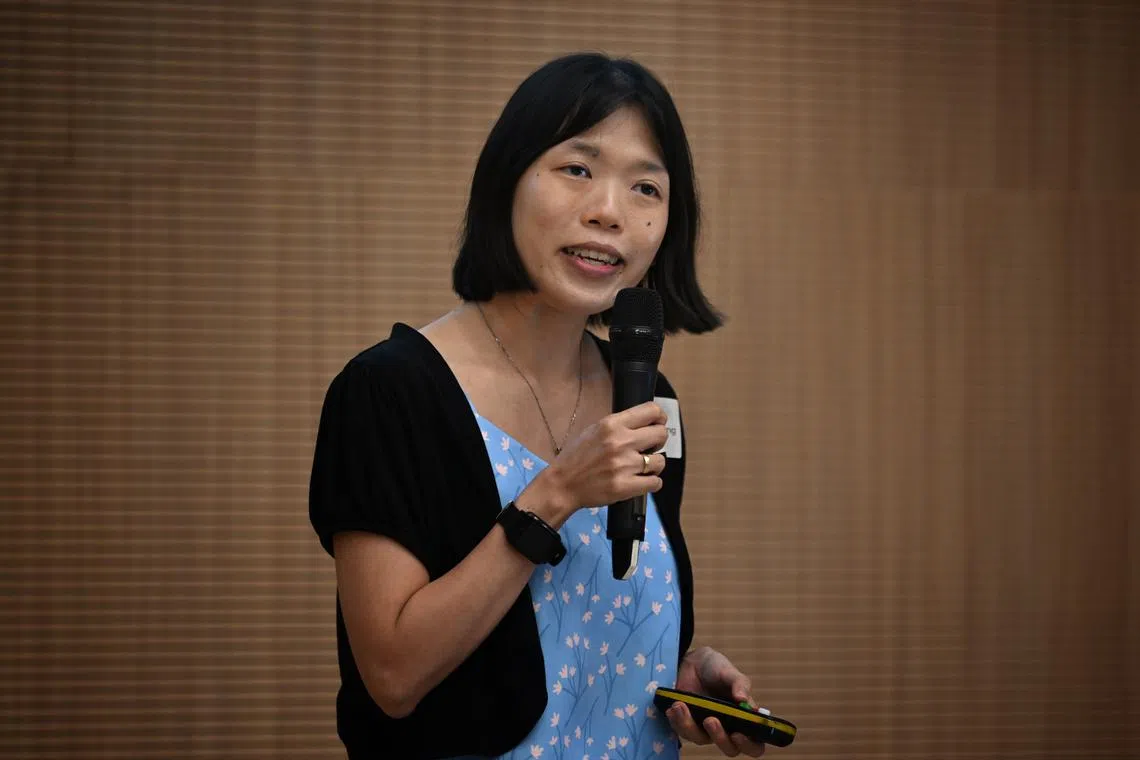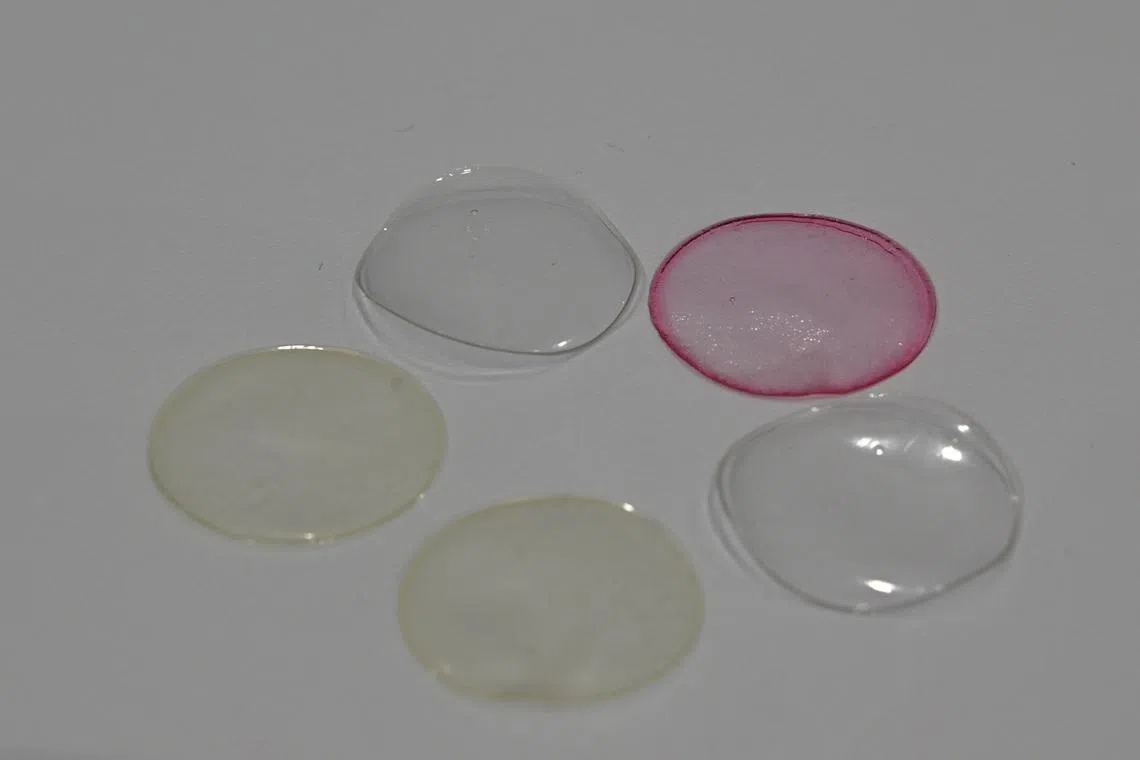Medicated oral film for epilepsy, green concrete among ideas supported by NUS innovation programme
Sign up now: Get ST's newsletters delivered to your inbox

Buccal films are made of edible polymers, and have medicine in them that is released directly into the bloodstream when they are stuck to cheeks.
ST PHOTO: CHONG JUN LIANG
Mahima Srinidhi Hari
Follow topic:
SINGAPORE – Local start-up PharLyfe+ has developed medicated oral films which can be easily administered to treat epilepsy.
The film, made of edible polymers, is stuck inside the patient’s cheek and medicine on the film is released directly into the bloodstream.
PharLyfe+ was one of the 14 start-ups featured at the National University of Singapore’s (NUS) Graduate Research Innovation Programme (Grip) Lift-Off Day on Wednesday.
Grip, now in its ninth run, is a three-month structured programme that guides participants to become deep-tech entrepreneurs, translating their research into start-ups.
At the end of the programme, teams present their start-ups to venture capitalists, incubators and industry players to secure funding and support.
Dr Tan Poh Leng, 37, co-founder of PharLyfe+, said: “As mothers, we have seen how difficult it is to get children to take injections. Some children also have difficulty swallowing tablets, especially big ones. So we feel that our films would address these problems as they are easy to take. It can be used for the elderly as well.”
People with epilepsy have seizures. The most common form of medication to stop the seizure is an injection to the arm or a medicine inserted to the rectum, which may be distressing for the patient and difficult to administer.
PharLyfe+’s innovation makes administering medicine to epileptics easier.
The buccal films are also being specialised for end-of-life care with a different combination of medicines and polymers.
PharLyfe+ is seeking regulatory approval for the films and is conducting human trials.
In his opening speech, Associate Professor Benjamin Tee, the associate vice-president of NUS Enterprise, said: “After Lift-Off Day, entrepreneurs will receive nine more months of support from our incubator to fine-tune products and solutions.”
To date, Grip has had 418 participants and helped to create 149 start-ups, he said.
EigenSensor, another medical research start-up, has developed a dry-electrode electroencephalography (EEG) device.

Dr Tan Poh Leng, co-founder of PharLyfe+, said her company’s medicated films help to make administering medicine easier.
ST PHOTO: CHONG JUN LIANG
An EEG machine works typically by having electrodes placed on a patient’s scalp using a gel. The device records brain activity to diagnose and monitor conditions such as epilepsy, sleep disorders and brain tumours.
It takes more than 30 minutes for technicians to set up the machine, and it can be done only in hospitals.
EigenSensor chief executive officer Ng Shi Kang, 29, said: “(But) seizures would usually happen at home or whereever the patients are, but they are unlikely to have the EEG recording set up to capture that event.
“So clinicians will base interpretation on the abnormalities they will find. Our device is for longer-term EEG recording so that we will be able to catch more of these abnormalities and seizures.”

PharLyfe+ has developed medicated oral films which can be used to treat epilepsy.
ST PHOTO: CHONG JUN LIANG
EigenSensor has developed a cap that contains a dry EEG device. The device takes less than a minute to set up and allows for epilepsy monitoring at home or elsewhere.
The team is working with hospitals to further improve the product.
Another project featured at the event is Circrete, where waste mineral clay is upcycled to make durable green cement.
Cement production accounts for up to 8 per cent of global emissions.
But Circrete’s production process reduces this carbon footprint by up to 70 per cent by transforming waste marine clay into green cement.

Dr Tong Shanshan, 35, CEO of Circrete, explaining her company’s innovation at the NUS Graduate Research Innovation Programme Lift-Off Day on June 28, 2023.
ST PHOTO: CHONG JUN LIANG
Dr Tong Shanshan, 35, Circrete’s CEO, said: “More than 10 million tonnes of waste marine clay are excavated annually. We will transform this local waste into green construction material.”
Marine clay is dug up for underground construction and is being used as landfill.
The start-up is in talks with private and public sector companies and plans to fully commercialise its product by 2025.

